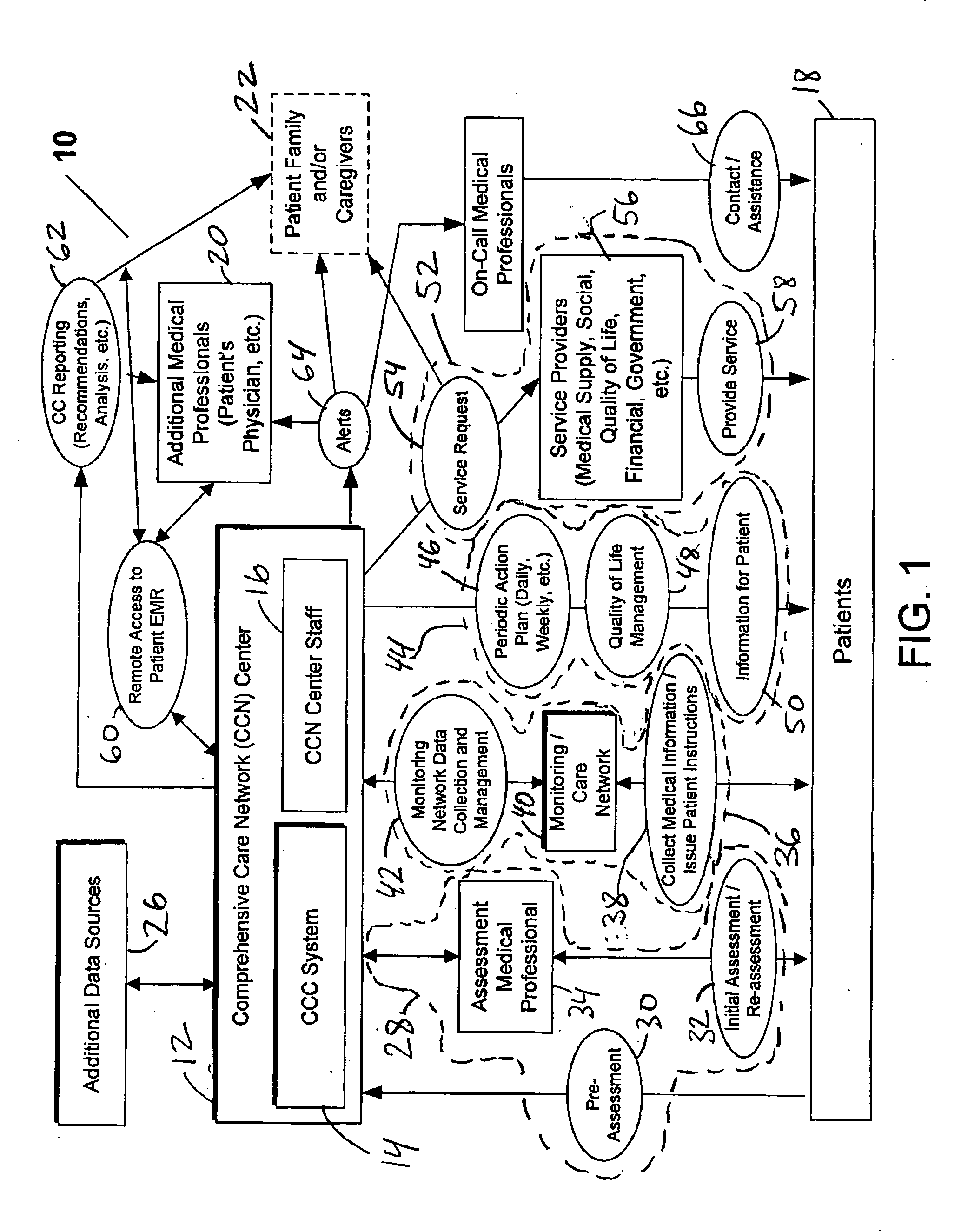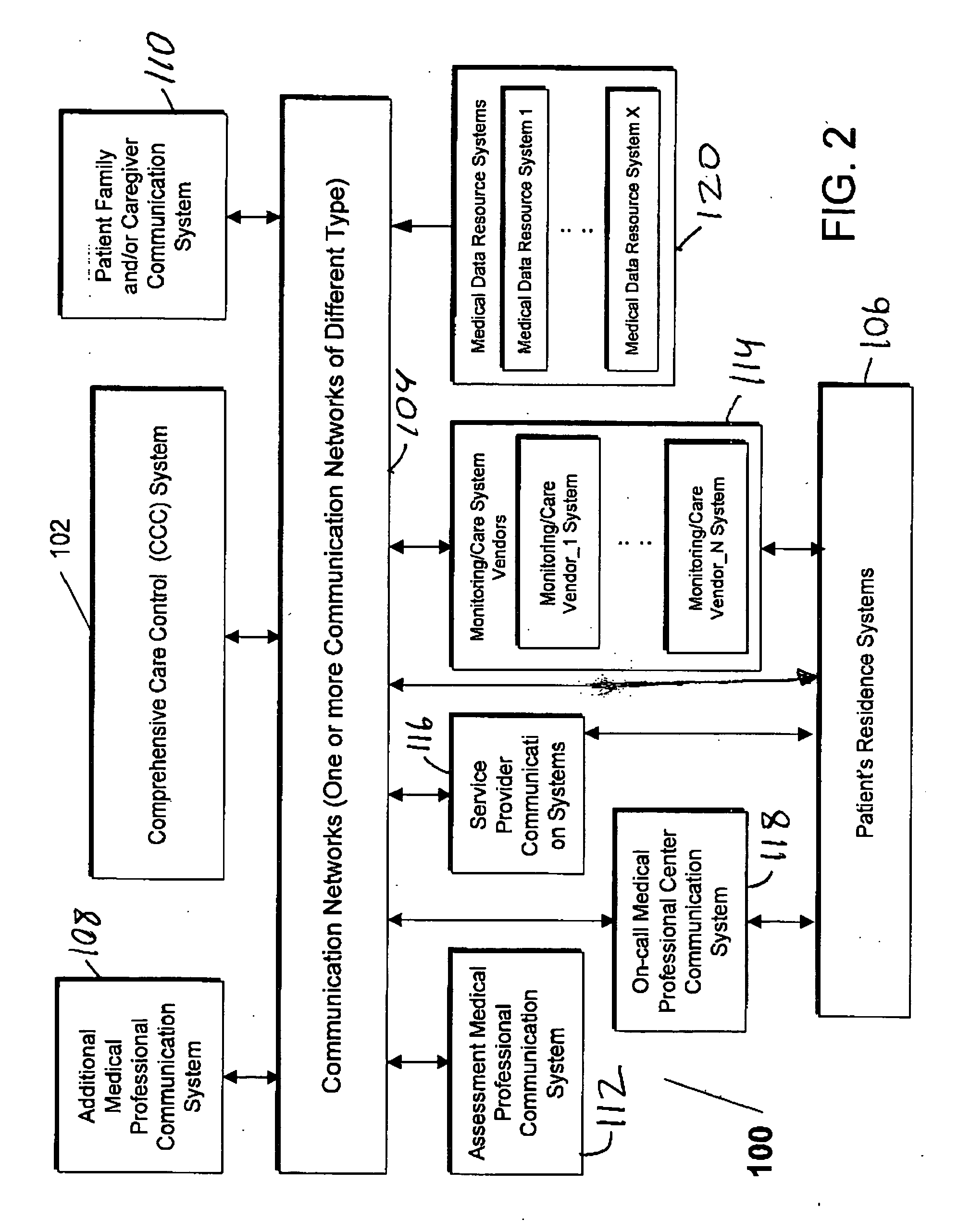System and method for comprehensive remote patient monitoring and management
- Summary
- Abstract
- Description
- Claims
- Application Information
AI Technical Summary
Benefits of technology
Problems solved by technology
Method used
Image
Examples
Embodiment Construction
[0044] The system and method of the present invention remedy the disadvantages of all previously known telemedicine, and remote patient care and monitoring systems by providing and enabling performance of a novel process for automatically developing and implementing a comprehensive customized care plan for a patient, to address all of the patient medical and non-medical (e.g., social, quality-of-life, personal) needs, utilizing a wide variety of information gathered both personally from a patient by a medical professional and also collected automatically by one or more telemedicine systems. The system and method of the present invention also continually re-assess and dynamically modifies the comprehensive care plan, and additionally enables a wide variety of services and benefits to be made available to the patients in a manner customized for their specific needs, with the offered services and benefits being dynamically adjusted as the patient needs change or evolve. As part of the ...
PUM
 Login to View More
Login to View More Abstract
Description
Claims
Application Information
 Login to View More
Login to View More - R&D
- Intellectual Property
- Life Sciences
- Materials
- Tech Scout
- Unparalleled Data Quality
- Higher Quality Content
- 60% Fewer Hallucinations
Browse by: Latest US Patents, China's latest patents, Technical Efficacy Thesaurus, Application Domain, Technology Topic, Popular Technical Reports.
© 2025 PatSnap. All rights reserved.Legal|Privacy policy|Modern Slavery Act Transparency Statement|Sitemap|About US| Contact US: help@patsnap.com



